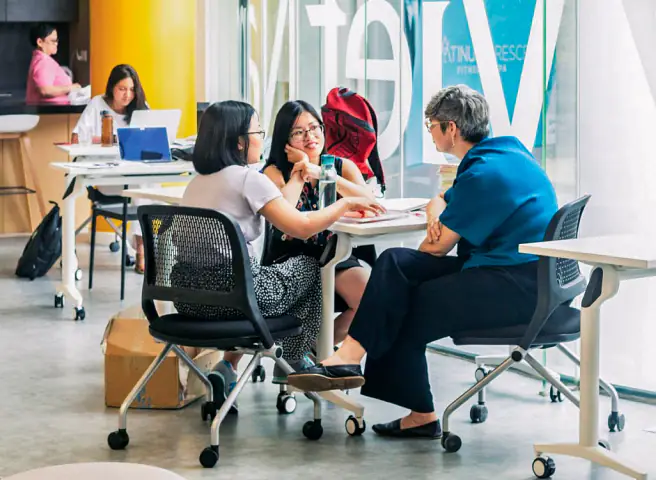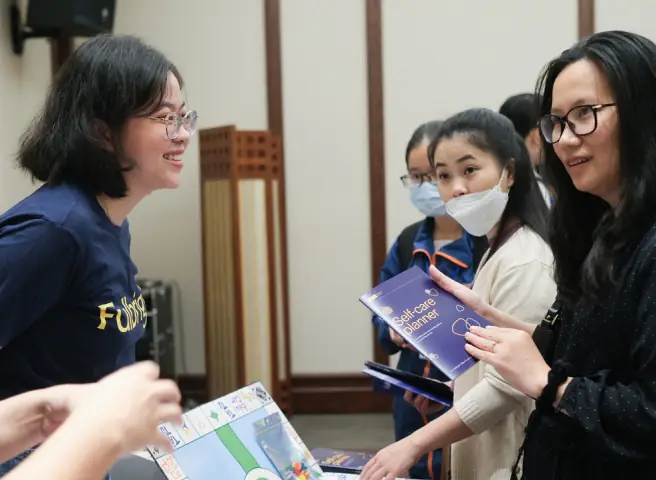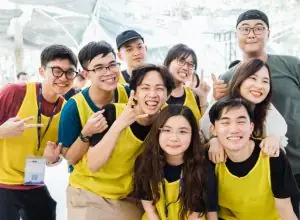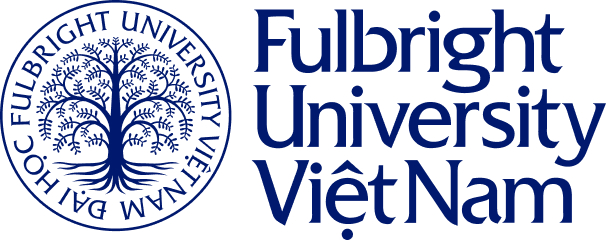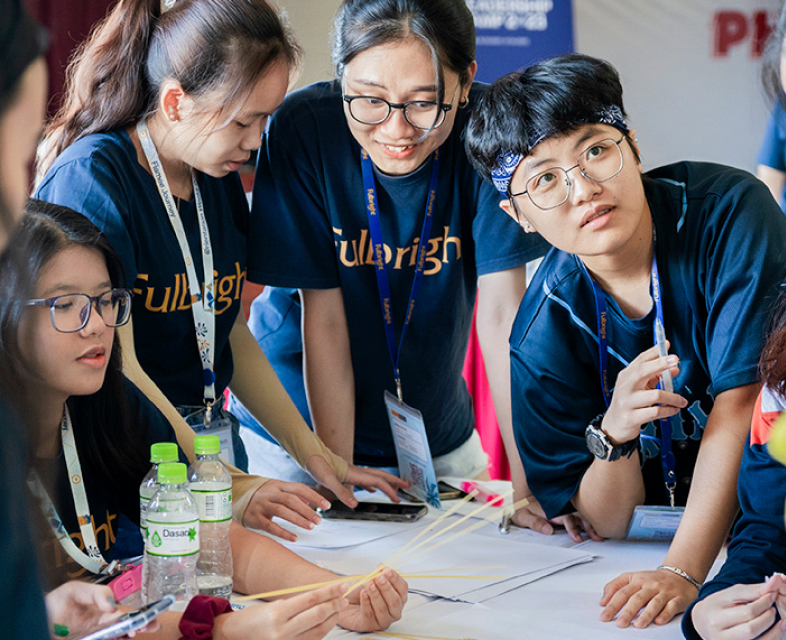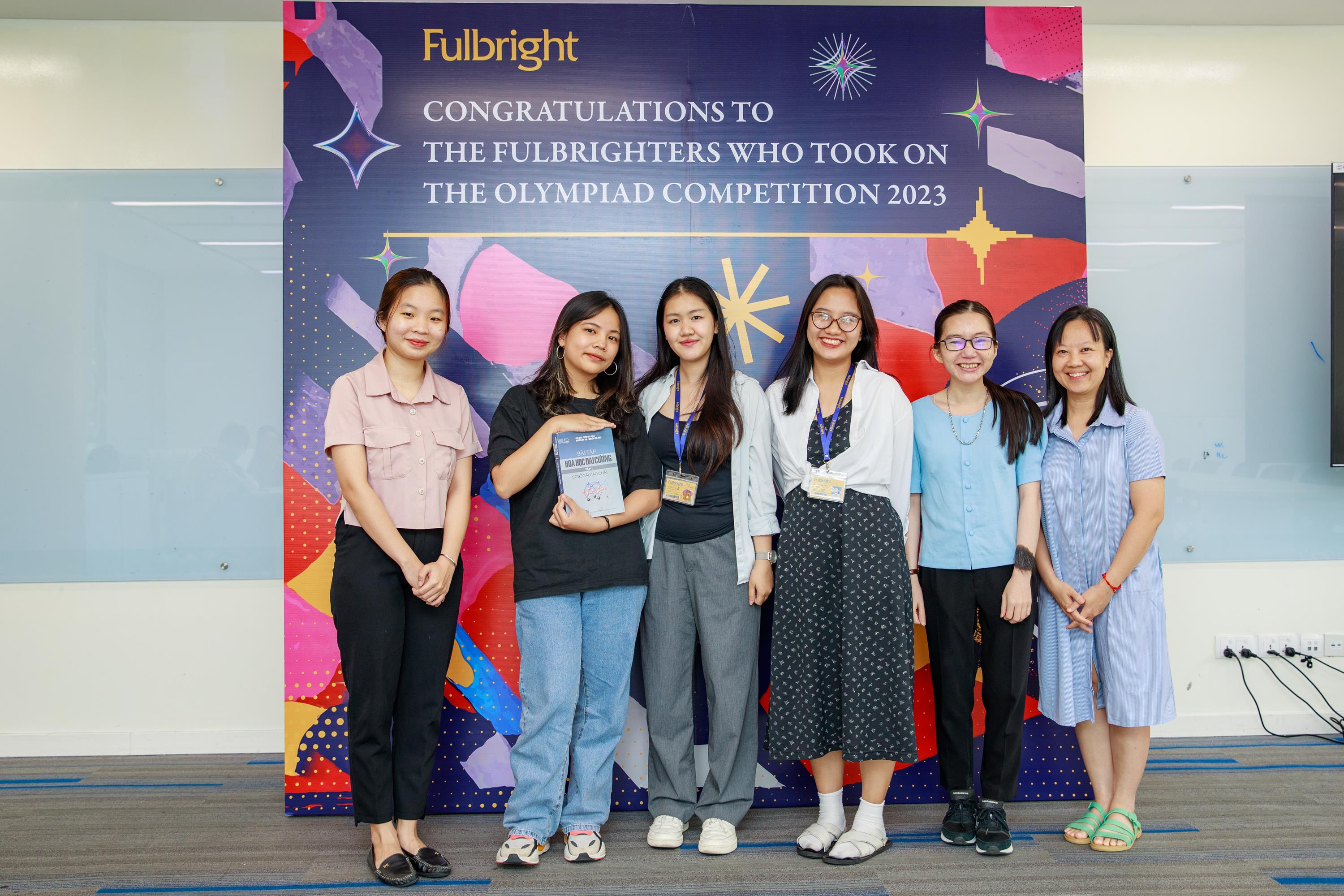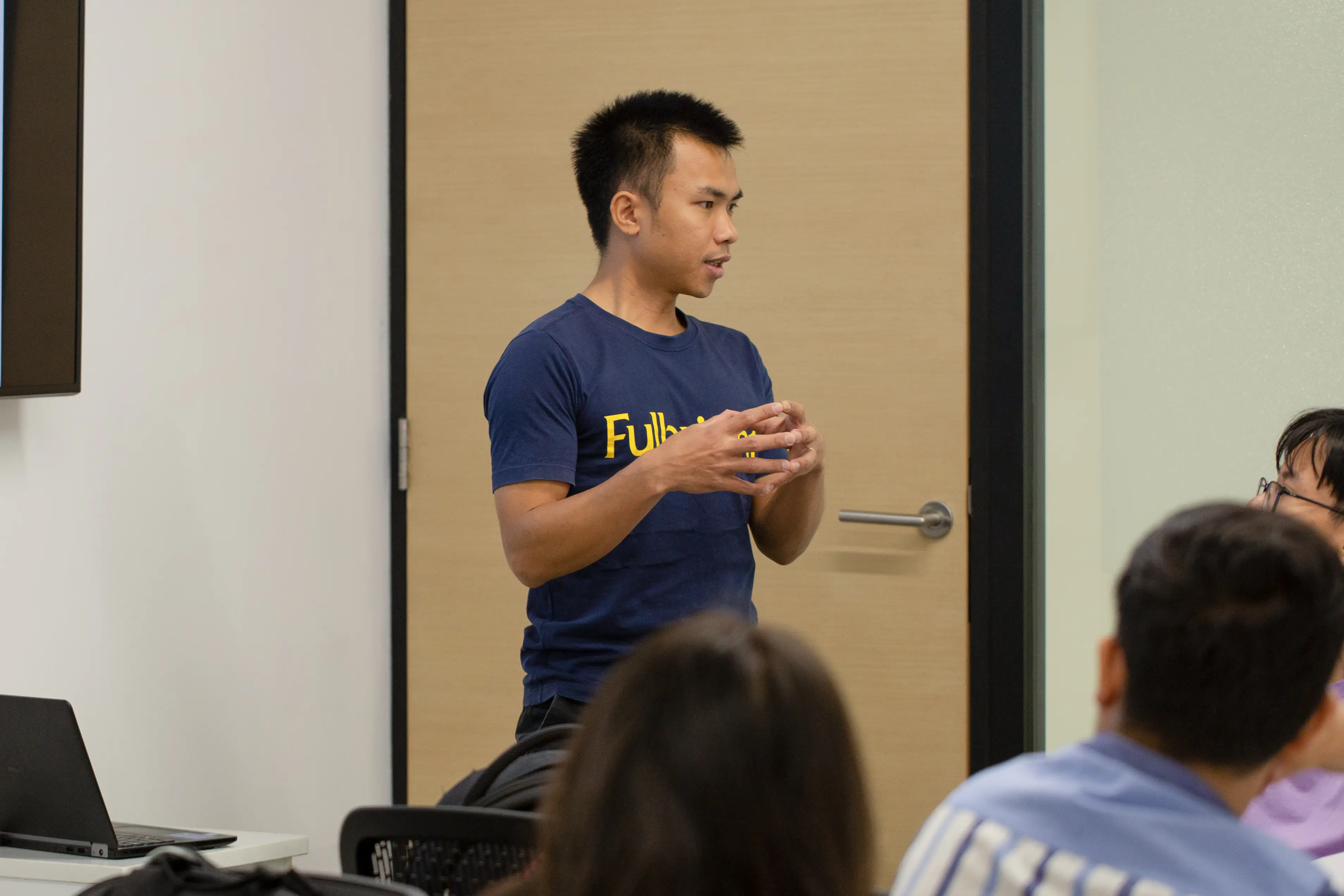
The soccer tournament
“Running, running, keep running, you can do it” – I kept telling myself during three soccer matches on a very hot sunny day in District 2, all while I started feeling a cold coming on. Those matches took place at the Fulbright Soccer team’s first event competition, a friendly tournament among international schools in Ho Chi Minh city. When I had been asked, I wasn’t sure how many players we might have for the tournament; I could barely estimate how physically prepared we were; and I knew nothing about the other teams. Yet the idea of some fun moments happening when playing alongside faculty, staff and students was motivation enough for me to sign up. And fun moments were exactly what we got.
Eight of us met to train for about three months and played together a few times before going through the school of hard knocks against higher quality and better-prepared teams in three back-to-back five-player matches…I don’t have to tell you the results. What I can proudly tell you is what we achieved during that interesting morning. First, we got the friendliest team award, aka the team conceding the most goals. Along with exhaustion, muscle pain and even blood, we finished three matches with smiles and laughs, trying our best without not giving up, and supporting each other to get through each challenge instead of yelling at one another. “Process is more important, right thầy [teacher]”, a student told me. “Yeah, and also hold onto this Fulbright spirit of not-giving-up and learning-under-uncertainty” – I replied.
Learn to Co-learn
Learning under uncertainty is the essence of the Co-Design Year (CDY) where we learned to adapt to new challenges and the unexpected, unafraid to make mistakes. I personally had several memorable experiences in this vein. One of them happened even before the CDY began when I played the role of “Scrum Master” for a design “Sprint” to put together the Learn to Co-Learn (L2CL) module, co-designers’ first experience at Fulbright. A Sprint is an intensive short period of time (often one or two weeks) of working toward some specific goals and/or products. In general, 4-6 team members work intensively and exclusively in about 4-6 hours a day while facilitated by a Scrum Master to finish a sprint.

On the second day of the L2CL Sprint, we realized that there were so many un-answered questions and we were not on the same page about what we were trying to achieve. Consequently, on the following day, we decided to pull an “emergency break”. It was the first week of August and we had to have something ready for student first experience the second week of September. During the Sprint, I felt terrible about my inability to organize the team. At the end, the team overcame the challenge by focusing on lessons learned and how to move forward for the rest of the week, rather than pointing fingers to find someone to blame. Three weeks after that, with all lessons learned in our pocket, we successfully ran another Sprint to finalize the L2CL module. I also volunteered to play the Scrum Master role despite the bitter taste from our prior failure. I wanted to finish what I started, just like the three soccer matches.
The L2CL module was a three-week gateway for co-designers to transition from their high schools to Fulbright ways of teaching, learning and co-designing. Co-designers learned about and practiced giving and receiving constructive feedback. They were exposed to active learning where they do more in classes than just passively listen to teachers, including read, write, debate, discuss, present and be engaged in higher-order thinking tasks such as analysis, reasoning, synthesis and evaluation. With active learning, students were partly responsible for their learning and partnered with faculty to work toward their learning.
In order to give meaningful feedback related to curriculum design, co-designers also stepped “behind the curtain” to see common principles, practices and rationale that faculty used to construct courses, lectures and class activities to tailor them to student learning.

All the learning from the first two weeks of L2CL culminated in the third and final week of the module, when students formed a Sprint team to design an executable 3-hour lesson plan teaching foreigners something experiential and funny about Vietnam. A team of two faculty members assisted students in those sprints in the role of Scrum Masters. It was very satisfactory for me to see that the L2CL module had prepared students to meaningfully contribute to the design of Fulbright courses, curricula and many other aspects of the Fulbright. Most importantly, in my view, LC2L planted a seed for the formation of a co-learning community at Fulbright. Students also mentioned that sprinting was an effective method for them to complete different team projects, class assignments and even personal ventures.
“Don’t ask me what my major is, ask me what I can do”
“What are the academic majors at Fulbright?” is one of the most common questions I have been asked. I had been struggling to find a concise and cool answer until hearing one from a co-designer in the meeting with Michael Greene, the current Mission Director for USAID/Vietnam. “I hope that when I graduate, people don’t ask me about my major, but about what I can do instead” – she said. This profoundly captures our philosophy of teaching students beyond disciplinary silos which is one of several innovative pedagogies we aspire to provide at Fulbright.
We are living in an era of leapfrogging technologies which shape and then change our daily activities. This includes the way we teach students. The world’s knowledge is tucked into our pockets. The ability to effectively and ethically access and utilize terabytes of knowledge within one’s portable devices has become far more important than memorizing facts. At Fulbright, we deliberately design the curriculum to help students gain this capability.
As important as it is to teach anthropology, biology, chemistry and so on, we incorporate competencies into the heart of our curriculum. This will enable graduates to thrive in whatever they do, not only immediately after graduation, but ten to thirty years later also, when they will likely work in fields or jobs that do not yet exist. This will enable graduates to do things that matter either to them or to the wider community. These competencies include creative and innovative thinking, critical thinking, reasoning, communication, life-long learning, collaboration, ethical reasoning and civic engagement.

A critical milestone of the student journey at Fulbright is the transition to major which happens at the end of the students’ second year. In principle, after the first two years of taking foundational courses (or core courses) and introductory courses in Arts, Humanities, Social Science, Natural Science, Engineering, Math and Computing (or stream courses), students will self-design a focused topic to personalize their third- and fourth-year journey. I co-designed the transition to major component in the curriculum with another founding faculty member and ten co-designers.
We spent many hours in class debating and discussing the process, content and assessment parameters for the transition to major. Despite different opinions about how to get it done, we all agreed that this is a critical moment and that students at Fulbright need to thoroughly design and rationalize their focused topic, course selections, experiential learning and final capstone projects toward this topic in their final two years of the undergraduate program. The topics need to fall into one or a few study areas so that students gain the depth of knowledge in those areas. Discussing and debating with students while getting their feedback is essential for faculty in the CDY to create the first liberal art university in and for Vietnam.
Building an airplane while flying it
Many university curricula are incubated for a few years among faculty members before recruiting students to deliver them. Inspired by a few recent successful models like Olin College of Engineering, we have included students in Fulbright’s designing from the very beginning, then delivering the curriculum in the following year. We usually describe it with the analogy of building an airplane while flying it, in which the co-design year is the very first phase of construction.
Faculty in the CDY went through a diverse range of activities with students. After the L2CL module, we taught them parts of some courses we intended to deliver at Fulbright in the future, we then showed them our thinking behind each lecture and class activity; finally faculty and students modified and adjusted lesson plans or even the whole structures of a course accordingly. In the process of flying an airplane while building it, founding faculty members joined not only as teachers, but many other roles such as advisors, partners, and even classmates. In addition to working with students, founding faculty members organized many other aspects of building Fulbright into Task Forces (TF) and Committees during the CDY, for instance the CDY Planning TF, the Assessment TF, the Hiring Committees, the Wellness TF, among others.
The CDY Planning TF was the one I mainly participated in. We met every week for 30 minutes right before the Undergraduate Faculty meeting to oversee and coordinate all academic activities involving undergraduate faculty and students.Despite of the uncertain nature of the CDY, when we were building an airplane while flying it, the team managed to keep the airplane from crashing and inefficiently burning fuels. Within the task force, my main contribution involved organizing activities cohesively and assigning students to classes and activities. My best lesson learned in this task force was to make tough decisions, sometimes under a lot of uncertainty whether the decision would lead to good outcomes. I also learned to balance student interest and institutional constraints by which students are bounded so that the university operation can run smoothly.
Being a founding faculty member in the CDY of Fulbright is a precious mark in my career. I have learned a lot. I have grown a lot. This place embraced me to make bold decisions, to try new things, to help people, to nurture next generations of Vietnam and to be my authentic self. Working in a highly collaborative community like this, trusting people is always an important guiding principle for me to work, discuss and act. I hope that we are trusted by parents and students to do our part in developing Fulbright students to become whole citizens, to contribute meaningfully to their society and to be themselves in this uncertain world.
Phan Vu Xuan Hung – Founding Faculty
